- News
- Reviews
- Bikes
- Components
- Bar tape & grips
- Bottom brackets
- Brake & gear cables
- Brake & STI levers
- Brake pads & spares
- Brakes
- Cassettes & freewheels
- Chains
- Chainsets & chainrings
- Derailleurs - front
- Derailleurs - rear
- Forks
- Gear levers & shifters
- Groupsets
- Handlebars & extensions
- Headsets
- Hubs
- Inner tubes
- Pedals
- Quick releases & skewers
- Saddles
- Seatposts
- Stems
- Wheels
- Tyres
- Tubeless valves
- Accessories
- Accessories - misc
- Computer mounts
- Bags
- Bar ends
- Bike bags & cases
- Bottle cages
- Bottles
- Cameras
- Car racks
- Child seats
- Computers
- Glasses
- GPS units
- Helmets
- Lights - front
- Lights - rear
- Lights - sets
- Locks
- Mirrors
- Mudguards
- Racks
- Pumps & CO2 inflators
- Puncture kits
- Reflectives
- Smart watches
- Stands and racks
- Trailers
- Clothing
- Health, fitness and nutrition
- Tools and workshop
- Miscellaneous
- Buyers Guides
- Features
- Forum
- Recommends
- Podcast
feature
 2024 Filament FX - 1.jpg
2024 Filament FX - 1.jpgCheck out the Filament FX bike with no down tube or chainstays
The Filament FX is an interesting bike with a story to tell; this carbon-fibre epoxy composite frame is made by hand in the UK, creator Richard Craddock saying that it was inspired by “the maverick frame designs of the 1990s”, but it's designed for use with modern features, like disc brakes, thru-axles, internal brake lines, and tyres up to 32mm wide.
Wow! There’s a lot to unpack here. This is a very unusual bike; not the sort of thing you’re going to see in the window of your local Halfords. Let’s start at the beginning... Filament says that the FX takes its inspiration from Graeme Obree, Corima Fox, Trimble, Alpinestars, Hotta, Lotus, Metron, and others who explored alternative frame designs.
The vast majority of bikes are built around ‘double-triangle’ designs: a front triangle (which usually isn’t actually a triangle) formed by the top tube, seat tube, down tube and head tube, and a rear triangle (in fact, usually two of them) comprising the seat tube, seatstays, and chainstays.
There have been many exceptions, though, such as Graeme Obree’s Old Faithful, which he rode to massive success in the 1990s, and many carbon-fibre monocoque frames, such as the Lotus and Hotta bikes ridden by the likes of Chris Boardman.
The UCI eventually brought in rules to outlaw non-double-triangle frames for racing, but not before many people had experimented with unorthodox designs. It’s these bikes that Filament is thinking of with the design of the FX.
You’ll notice right away that the FX lacks a down tube and chainstays. Instead, the frame is built around a central strut that is effectively a top tube and head tube combined, and this runs into the seatstays, with a seat tube (of sorts) extending up and down from the middle. It's a long way from conventional.
Essentially, Filament has reduced the number of frame elements. Why? For a clean look and a smooth ride quality, it says.
“It's an exploration of some of the alternative frame designs we saw in the 1990s before they were ruled out of racing by the UCI,” says Richard Craddock. “This particular creation is inspired by Graeme Obree's bikes, including the paint choice.
“The intention is to increase the comfort of the ride, with more vertical compliance to smooth the bumps.”
Richard says that building a frame without these usual elements presents challenges in terms of managing the load paths and maintaining enough vertical stiffness. Gear cabling is also an issue on a bike of this kind, so wireless shifting is ideal.
The Filament FX is made from carbon fibre epoxy composite with a structural internal core. That core is a material called Rohacell, which is a polymethacrylimide-based structural foam.
“The core makes it much more resistant to crush forces compared to being hollow, so accidental damage is reduced,” says Richard. “It also increases stiffness.”
Each FX is custom-made by hand in the Filament workshop in Bromsgrove, Worcestershire. Richard has been making frames for the past 12 years after working for other companies and manufacturers in the bike industry.
Take a look at Filament’s tube-to-tube construction methods here.
“The rigid core material is cut and shaped, then the prepreg carbon is wrapped over,” he says. “The core supports the skin and distributes the forces as with the lattice structure used in 3D-printed metal parts.”
A Filament FX frameset (frame, fork, headset and seat collar) is priced at £6,000. Filament also sells full bikes; it offers an individual service.
The Filament range also features more traditional-looking frames for road, gravel, time trial and track, plus tandems. The designs are diverse although they’re all available in custom geometries with custom paint finishes.
Mat has been in cycling media since 1996, on titles including BikeRadar, Total Bike, Total Mountain Bike, What Mountain Bike and Mountain Biking UK, and he has been editor of 220 Triathlon and Cycling Plus. Mat has been road.cc technical editor for over a decade, testing bikes, fettling the latest kit, and trying out the most up-to-the-minute clothing. He has won his category in Ironman UK 70.3 and finished on the podium in both marathons he has run. Mat is a Cambridge graduate who did a post-grad in magazine journalism, and he is a winner of the Cycling Media Award for Specialist Online Writer. Now over 50, he's riding road and gravel bikes most days for fun and fitness rather than training for competitions.
Latest Comments
- Aluminium can 1 hour 43 min ago
Frame weight is about a hundred grams less than a CAAD 12 disc, which can be picked up cheap these days on gumtree. Heck, get the CAAD12 non disc...
- Dnnnnnn 5 hours 37 min ago
You're too kind. They just seem to be unpleasant trolls.
- ktache 6 hours 19 min ago
I realised that the lads crash is a rare set of circumstances, and the numbers in the race would add complexity, but don't smart watches have...
- Jogle 6 hours 32 min ago
And in Southampton today we had another example of those entitled ambulances going through red lights without a care for anyone else!...
- belugabob 7 hours 44 min ago
Because the number of 40% tax payers buying downhill bikes on the scheme, whilst lower rate tax payers (who are more likely to actually cycle to...
- TheBillder 7 hours 47 min ago
The spokes and nipples are not anodised for environmental reasons, but the rims are. Which is a lot more metal. Hmm...
- Zebulebu 8 hours 19 min ago
Yeah, they'll be great after being crushed in your jersey pocket for three hours. ...
- Rendel Harris 8 hours 26 min ago
I'm afraid so, anything operated by TfL apart from the Woolwich ferry and the Silvertown Tunnel bike bus when it opens next month.
- Backladder 9 hours 34 min ago
Its only "meh" because we all experience similar passes every ride, I'm sure if they got their finger out and worked out the distance it would be...
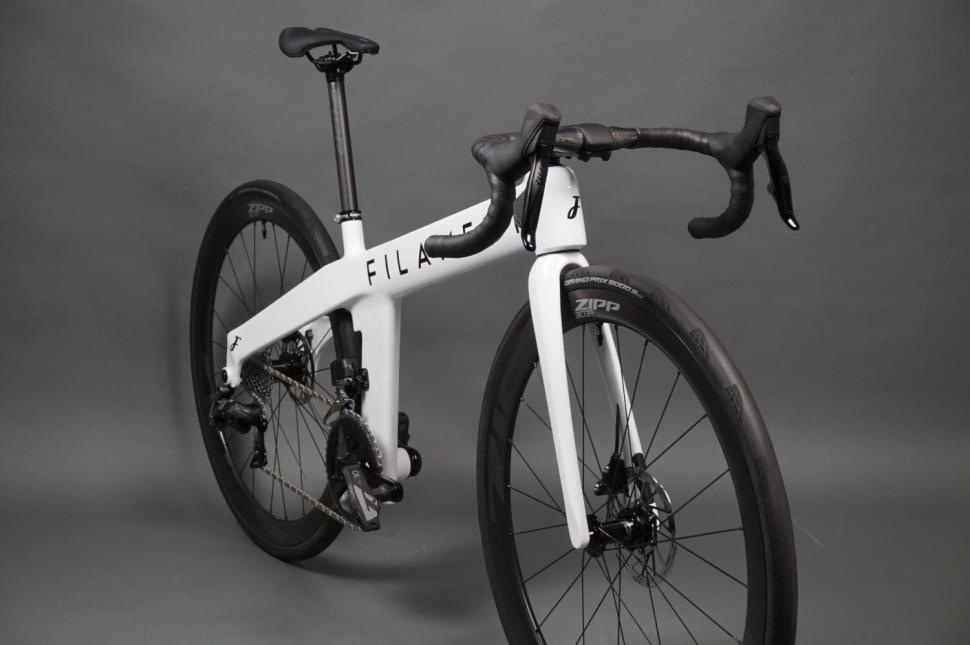
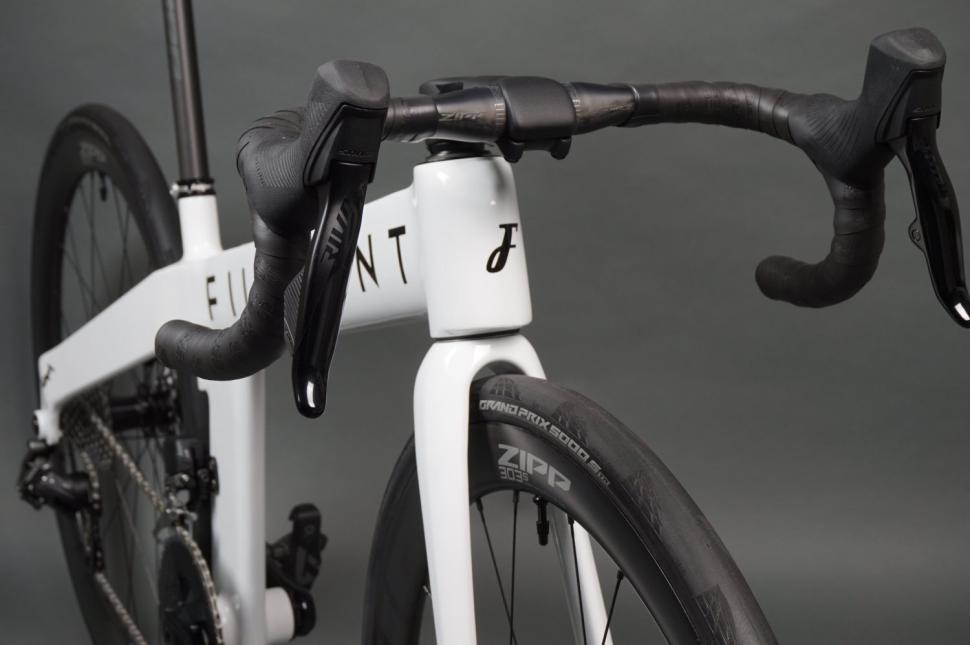
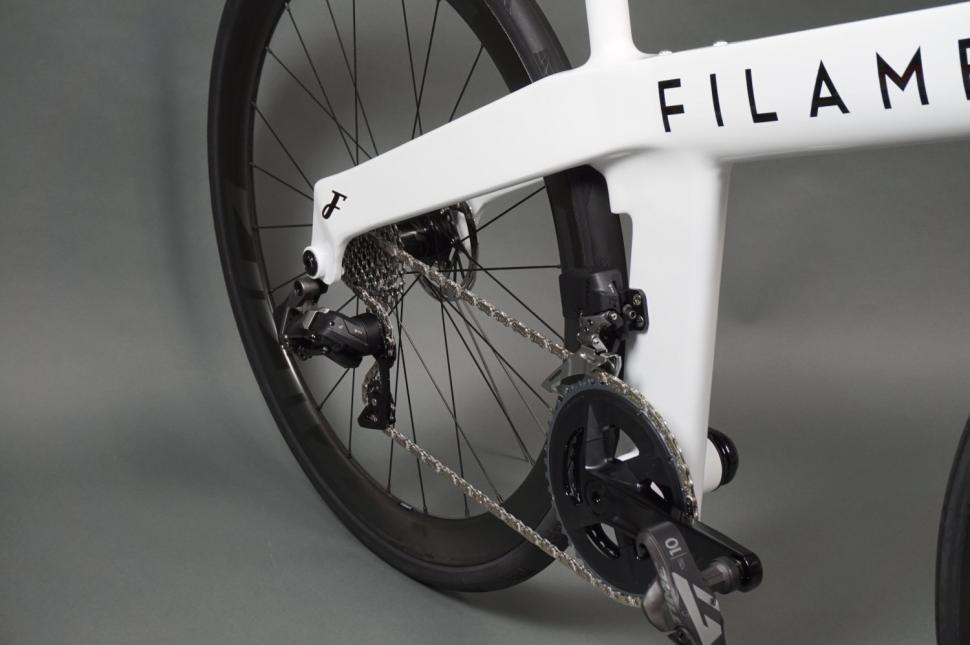
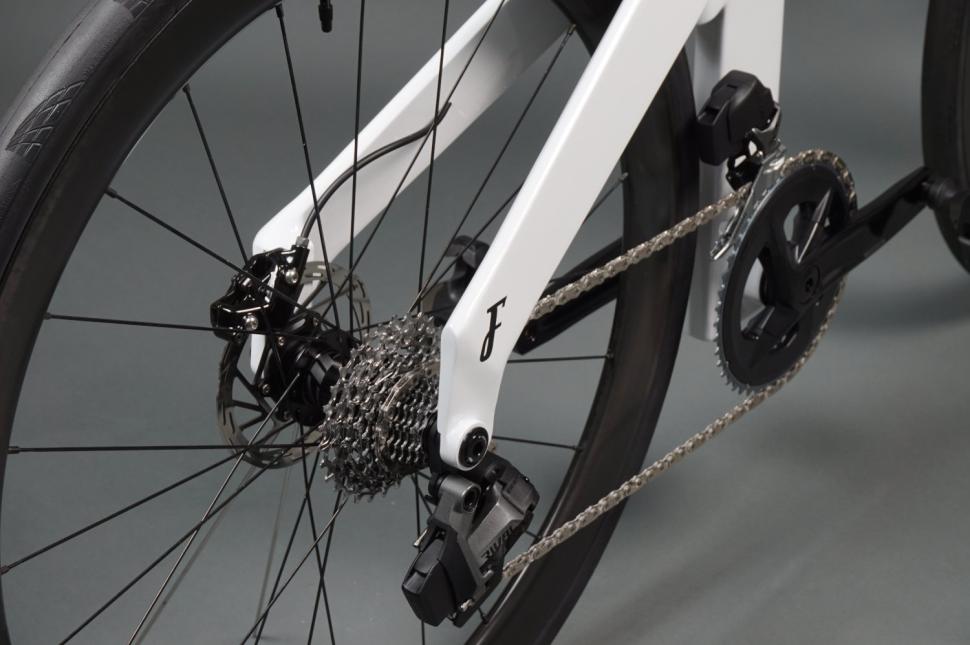
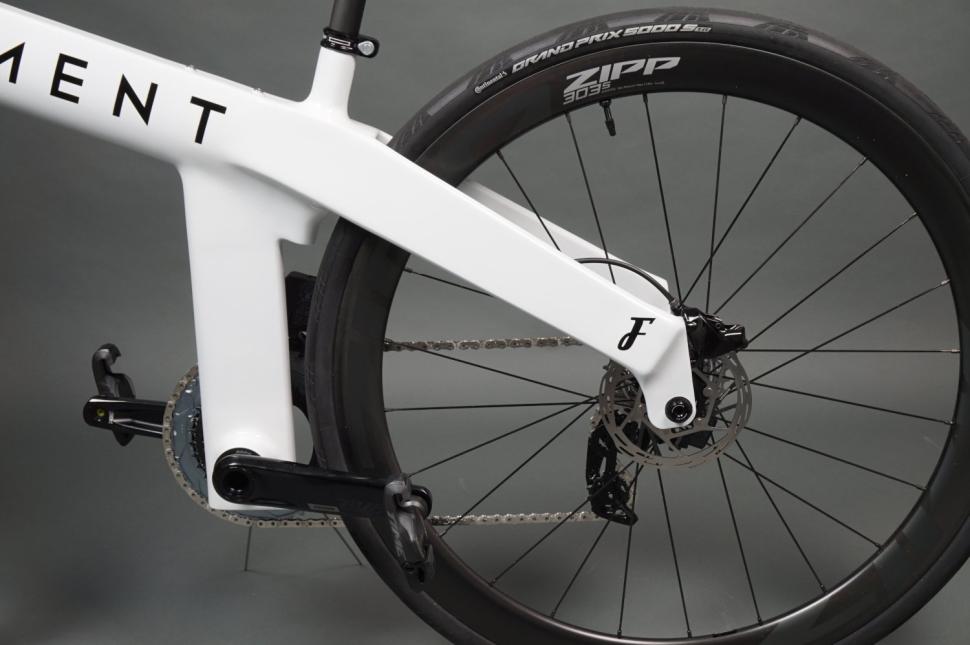
Add new comment
10 comments
I like it because it's a bit different, but it's way out of my price range. Wonder if it will take off, or will we be talking about in 15 years time as one of those dead ends
Maybe not any more, but it seems to be inspired by crap Halfords mountain bikes of the nineties.
"Smooth ride"? Looks like it has the vertical compliance of an RSJ.
I don't understand what this is for. It talks about comfort, suggesting to me that it is an endurance bike, but I can't see bosses for a bottle cage.
Likewise nowhere for mudguards or racks, so not bikepacking.
I guess you could use it to nip to the shop for a newspaper?
It'd be nice to have included some technical information such as weight stiffness and compliance compared to a conventional frame. Is this just something different or can it claim to be an improvement? Looks nicely made and very interesting. A detailed test ride article would be really interesting.
Largely agree with the sentiment, but it looks to me like there are bosses on the top of top tube, just in front of the seat post.
Now I have put my glasses on I can see the bosses - they look quite close to the seat tube, is there enough clearance for a bottle cage?
Also, after the slating that the new Colnago got last week for being ugly, can I just say that this looks much worse!
Wouldn't be the easiest bike to lock up once you got to the shops.
You are way overthinking this. It's for people who want something else than the same old same old. That's all.
The whole' it's for complience and comfort' thing is probably just to make it seem like there was an actual reason for going this way other than just to offer something different.
Lastly, why would only endurance riders want comfort? By now it's well known that comfort = speed, and aside from that, why would you not want your sunday club ride to be a little bit more comfortable?
Just don't turn up at road races expecting to ride it.